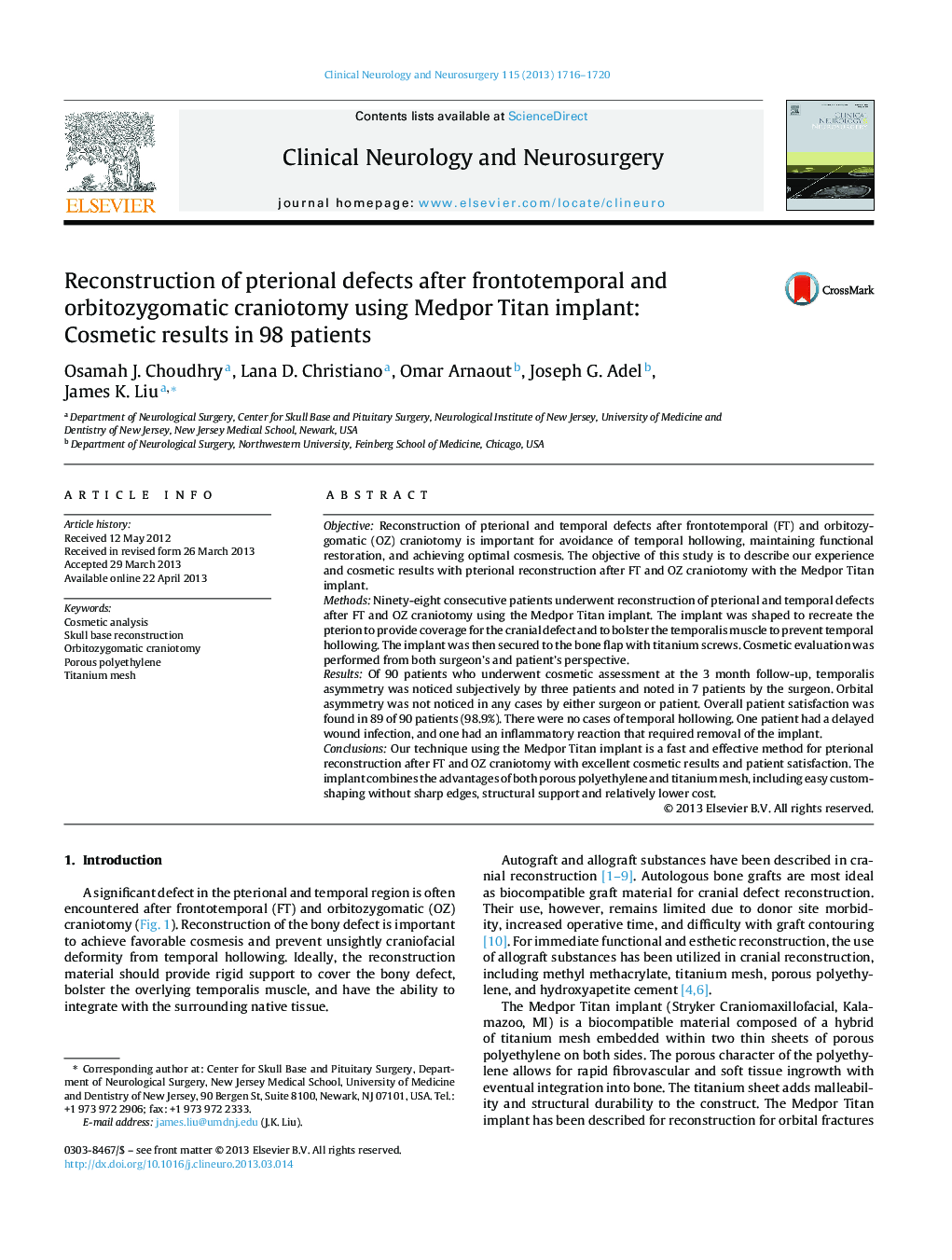| Article ID | Journal | Published Year | Pages | File Type |
|---|---|---|---|---|
| 3040488 | Clinical Neurology and Neurosurgery | 2013 | 5 Pages |
ObjectiveReconstruction of pterional and temporal defects after frontotemporal (FT) and orbitozygomatic (OZ) craniotomy is important for avoidance of temporal hollowing, maintaining functional restoration, and achieving optimal cosmesis. The objective of this study is to describe our experience and cosmetic results with pterional reconstruction after FT and OZ craniotomy with the Medpor Titan implant.MethodsNinety-eight consecutive patients underwent reconstruction of pterional and temporal defects after FT and OZ craniotomy using the Medpor Titan implant. The implant was shaped to recreate the pterion to provide coverage for the cranial defect and to bolster the temporalis muscle to prevent temporal hollowing. The implant was then secured to the bone flap with titanium screws. Cosmetic evaluation was performed from both surgeon's and patient's perspective.ResultsOf 90 patients who underwent cosmetic assessment at the 3 month follow-up, temporalis asymmetry was noticed subjectively by three patients and noted in 7 patients by the surgeon. Orbital asymmetry was not noticed in any cases by either surgeon or patient. Overall patient satisfaction was found in 89 of 90 patients (98.9%). There were no cases of temporal hollowing. One patient had a delayed wound infection, and one had an inflammatory reaction that required removal of the implant.ConclusionsOur technique using the Medpor Titan implant is a fast and effective method for pterional reconstruction after FT and OZ craniotomy with excellent cosmetic results and patient satisfaction. The implant combines the advantages of both porous polyethylene and titanium mesh, including easy custom-shaping without sharp edges, structural support and relatively lower cost.
